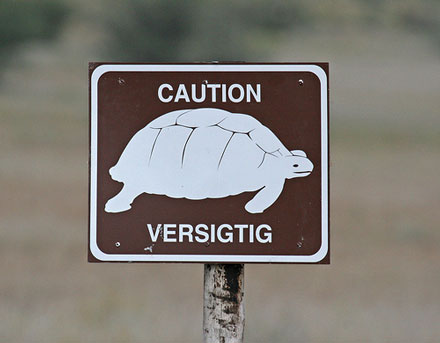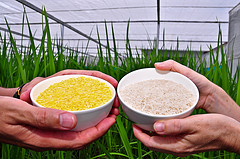by
Ruth Hall, Associate Professor, PLAAS.
Church leaders met last week in Durban at a summit on ‘Land Rights and Land Grabbing in Southern Africa’. The event provided valuable insights on land deals, dispossession and displacement from several African countries.
Land cannot be understood merely as a commodity. Rather, it has a social function as a source of livelihood for the poor – and recognition of this must feature centrally in any development initiatives.
‘Land belongs to God, not to the state’
‘Land belongs to God, it does not belong to the state, not to traditional authorities, the land belongs to God,’ said Pastor Selby Mabwe of the Methodist Church from South Durban. ‘And God is on the side of the oppressed. We must be champions of justice in an unjust world.’
The purpose of the Summit, held in Durban on 16-18 October, was to develop an inter-denominational common understanding of the challenges of land grabbing and landlessness, while developing a joint regional platform among churches to work with civil society to defend against evictions and advocate for land redistribution and land justice.
There are many actors involved in land grabbing in Southern Africa: multinational companies and governments, but also local elites. ‘While poor farmers and landless people in Southern Africa are struggling for land, land grabbing is continuing in the region, depriving many families of their access to land and other resources such as water, grazing land and firewood,’ said the church organisers of the event.
The organisers have also issued a
press release summarising the messages from the event (pdf).
Customary land rights: a blind spot
 |
Reverend Sydney Mthethwa of the Rural Network
points to some of the key challenges for realizing
land rights in Southern Africa |
Participants agreed that the non-recognition of customary and informal land rights by governments and investors is what underpins problems of land grabbing in the region. This means that the property rights and livelihoods of the poor are rendered invisible and unimportant. All the countries in Southern Africa experience a degree of legal dualism – civil and customary legal codes – which lies at the heart of many land conflicts. Only through legal recognition and provision of political platforms for the poor can there be meaningful engagement between local communities, investors and state authorities.
‘Governments take side with the private sector; we need to call on governments to side with the poor to access land to meet their basic needs’, said Reverend Sydney Mthethwa of the Rural Network in South Africa.
South Africa: ‘Don’t talk for us, without us’
In the context of South Africa’s land redistribution programme, people move from being tenants on private commercial farms, to being tenants of the state. Gcino Shabalala of the Landless People’s Movement explained how the current
Proactive Land Acquisition Strategy (pdf) allows the state to remove rights from people and to dispossess them, if they are seen as unproductive or non-compliant with state-approved plans. This does not constitute freedom and autonomous land rights, he argued. His organization adheres to the slogan of the peri-urban social movement, Abahlali baseMjondolo, which is ‘Don’t talk for us, without us. We are not stupid, we are poor.’
Democratic Republic of Congo: private concessions and mining
 |
Ruth Hall of PLAAS and Future Agricultures
and Placide Mukebo of the Archdiocese of Lubumbashi |
Placide Mukebo of the Archdiocese of Lubumbashi presented data showing the extent of private concessions in the Democratic Republic of the Congo. Here, 48% of the national territory is under mining concessions, 11% under forestry concessions, and a further 10% are protected areas – meaning that corporate and state interests account for at least 69% of the country’s surface. In Katanga Province, 72% of the land area has been allocated to private companies in the form of mining concessions and, because there is a legal hierarchy in the country’s legal code, the mining law allocating such rights trumps the land law that deals with customary land rights.
Contestations over such resources underpin in part the widespread conflict still plaguing that country.
Angola: large-scale modernization
Angola, like many other African states, nationalised colonial estates following independence, and state farms were set up during this period but fell into disrepair during civil war. After economic reforms and liberalization in the 1990s, these entities – artefacts of the colonial and Marxist periods – have been revived in the form of private corporate estates, with multinational companies as well as domestic elites re-establishing this large-farm sector. The cadastre (land register) is largely unchanged.
"We are making the same mistake as the Portuguese", said Paulo Filipe of Land for Integrated Data Analysis, "we are missing the right target group again and again: the small-scale farmers. Instead, all the focus is on modernization through large-scale commercial farming."
Zambia: mining
In Zambia’s north-western region, its ‘new copperbelt’ has seen substantial recent mining expansion for various minerals. One mine in Solwezi had acquired 50,000 square km. The country has no resettlement policy, and while mining companies have resettled those whose land has been taken over, their new homes are in remote areas with poor conditions, and poor water supplies. No compensation has been provided for the land they lost.
These developments are also taking place in the absence of a national Land Law and Land Policy – both have been in draft for the past 14 years.
Comparing Zimbabwe and Mozambique
Following Zimbabwe’s fast track land reform programme in the early 2000s, occupiers have been protected by law, and provided with permits (for smaller A1 plots) and offer letters for 99 year leases (for larger A2 plots). However, the Constitution still allows for compulsory acquisition without compensation, except for improvements.
Participants considered whether the Mozambican model of statutory recognition of informal land rights, while also allowing these to be transacted, was a preferable model.
Botswana: Tribal Land Boards
Botswana’s model of Tribal Land Boards incorporate traditional leaders into the administration of tribal land, while the owner remains the state. Lack of serviced land in urban and peri-urban areas is one of the major flashpoints, as well as growing pressure on tribal land which constitutes over 70% of the country.
Challenges for the church in South Africa
In South Africa, the major challenge is to redistribute land. But even where black people own land under customary systems, inferior forms of tenure, including ‘permission to occupy’ certificates, show that the discrimination against black people’s land rights continues. And where the church holds land in the communal areas, its rights are often unclear.
Cardinal Wilfred Napier, Archbishop of Durban and head of the Catholic Church in South Africa, disputed the view held by some participants that the church has been a land grabber. There was a debate about whether it is fair to see the church in this way, and the extent to which churches acquired land in order to provide sanctuary for people who were dispossessed. ‘The church is not a landowner for its own benefit’, he said. But participants also pointed to cases in KwaZulu-Natal province where local traditional authorities contest the claims of churches to having legitimate rights on land in communal areas.
Jubilee principles
Drawing from the principle of ‘Jubilee’ in the book of Leviticus, the church leaders agreed that while on the one hand land should be returned to its original owners, it should also be given to those that need it. This means that redistributing access to land to meet people’s basic needs must be prioritized ahead of allocation of land for profit. This agenda is central to countering the commodification of land – and of life – in order to restore humanity at the centre of society.
‘Commodification of land is linked with commodification of other sectors of life, and the language of commodification is permeating life’, observed Bishop Mike Vorster, head of the Methodist Church of South Africa.
See also the
Mbour Declaration on Land Grabbing Africa (pdf) by church leaders in 2011.
Further reading
All photos by Ruth Hall.
Ruth Hall convenes the Future Agricultures land theme and is an Associate Professor at the Institute of Poverty, Land and Agrarian Studies (PLAAS). She tweets at @RuthHallPLAAS





 In addition to contributing to the general discussion and emphasizing the role that Future Agricultures can play in improving FNS in Africa, Sam also presented the work he did with two others under the FAC Commercialization Theme last year: “Value chain analysis of smallholder pineapple in the Akuapim South municipality of Ghana” by Samuel Asuming-Brempong, Boahen Atta Oppong and Sampson Osei (Department of Agricultural Economics and Agribusiness, University of Ghana), which was well received.
In addition to contributing to the general discussion and emphasizing the role that Future Agricultures can play in improving FNS in Africa, Sam also presented the work he did with two others under the FAC Commercialization Theme last year: “Value chain analysis of smallholder pineapple in the Akuapim South municipality of Ghana” by Samuel Asuming-Brempong, Boahen Atta Oppong and Sampson Osei (Department of Agricultural Economics and Agribusiness, University of Ghana), which was well received.










